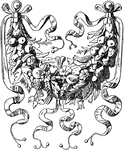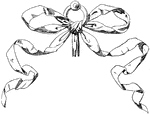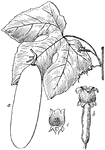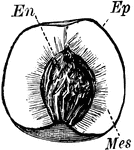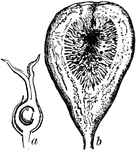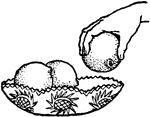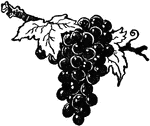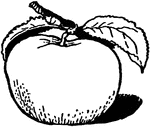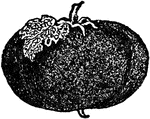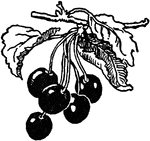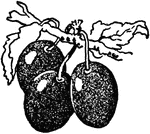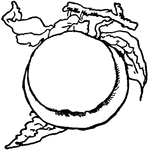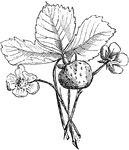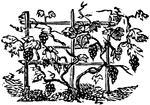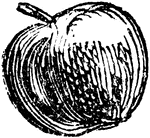
Renaissance Strap-Work Frame
The Renaissance strap-work frame was made from bronze tablets. Foliage, palmettes, festoons and garlands…

Renaissance Strap-Work Frame
The Renaissance strap-work frame was made from bronze tablets. Foliage, palmettes, festoons and garlands…
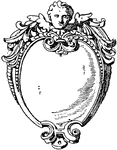
Renaissance Strap-Work Frame
The Renaissance strap-work frame was made from bronze tablets. Foliage, palmettes, festoons and garlands…

Renaissance Strap-Work Frame
The Renaissance strap-work frame was made from bronze tablets. Foliage, palmettes, festoons and garlands…

Renaissance Strap-Work Frame
This Renaissance strap-work frame was made between 1576-1577 in Germany. Made out of bronze tablets,…

Renaissance Strap-Work Frame
This Renaissance strap-work frame was made between 1576-1577 in Germany. Made out of bronze tablets,…

Dorian
The dorian (Durio zibethinus) is the fruit of the dorian tree in the Bombacaceae family. The fruit is…
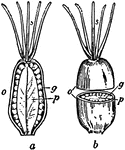
Cashew Tree
An illustration of various parts of the cashew tree. "1, Branch, bearing flowers and fruit. The fruit…
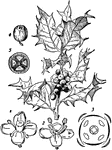
Holly
Ilex aquifolium (Holly, or European Holly to distinguish it from related species) is a species of holly…
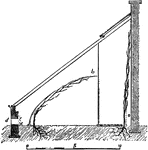
Peach House
The peach house is a structure in which the ripening of the fruit is accelerated by the judicious employment…
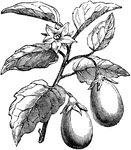
Eggplant
The Eggplant (Solanum melongena) is a flowering plant in the Solanaceae family of nightshades. Its fruit…

Fruit of Berberis
An illustration of the berberis fruit. Berberis (Bér-be-ris, barberry, pepperidge bush) a genus…

Oleaster
"Flowering Branch of Oleaster (Elaeagnus angustifolia). a, fruit; b, section of same." -Whitney, 1911
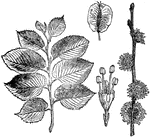
English Elm
Now known as Ulmus procera, the image shows a "Flowering Branch and Foliage of English Elm (Ulmus campestris),…

Fructification of Carrot Flower
An illustration of fructification of the carrot flower. Fructification is a term used in the plant morphology…
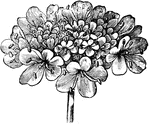
Inflorescence of Field Scabious
An illustration of the inflorescence of the field scabious. Knautia arvensis, commonly known as Field…
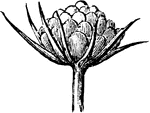
Young Inflorescence of Field Scabious
An illustration of the young inflorescence of the field scabious. Knautia arvensis, commonly known as…

Ray-floret of Field Scabious
An illustration of a ray-floret of the field scabious. Knautia arvensis, commonly known as Field Scabious,…

Ray-floret of Field Scabious
An illustration of a ray-floret of the field scabious. Knautia arvensis, commonly known as Field Scabious,…

Seed of Field Scabious
An illustration of the seed of the field scabious. Knautia arvensis, commonly known as Field Scabious,…

Sepal and Fruit of Comfrey
Comfrey (also comphrey) is an important herb in organic gardening, having many medicinal and fertilizer…

Encarpus
"In architecture, a sculptured ornament in imitation of a garland or festoon of fruits, leaves, or flowers,…

Epiphyllospermous Frond
"Part of Epiphyllospermous Frond. In botany, bearing the fruit or spores on the back of the leaves or…

Esparto Grass
"Esparto-Grasses. 1, 4, stalk and fruit of Macrochloa tenacissima. 2, 3, 5, stalk, flowering stem, and…
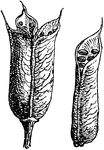
Larkspur Follicle
"Follicle. Fruit of Larkspur. A dry one-celled seed-vessel consisting of a single carpel, and dehiscent…
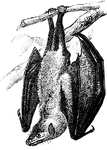
Fruit Bat Hanging from Tree
The image shows a fruit bat, a bat from the Pteropodidae family of megabats.
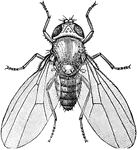
Common Fruit Fly
The Common Fruit Fly (Drosophila melanogaster) is an insect in the Drosophilidae family. The species…
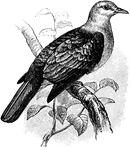
Bronze Fruit Pigeon
The Bronze Fruit Pigeon (Carpophaga aenea) is a bird in the Columbidae family of pigeons and doves.

Fructifying Tip of a Frond of Rockweed
Known as rockweed or bladder wrack, this species of seaweed is in the Fucaceae family of brown algae.…

Scab Fungus
"The Scab-fungus (Venturia inaequalis). a, an infested apple, showing scabs caused by the fungus; b,…

Branch of Gambooge
The Gambooge tree (Garcinia gummi-gutta) is a plant in the Clusiaceae family. The species was also known…
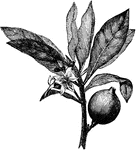
Huito
The Huito (Genipa americana) is a small tree with edible fruit in the madder family, Rubiaceae.

Cain and Abel Making an Offering to the Lord
"And in process of time it came to pass, that Cain brought of the fruit of the ground an offering unto…
Wheat
Wheat (Triticum vulgare) is an annual herbaceous plant. The seed is oblong, or a compressed oval, surrounded…
Wheat
Wheat (Triticum vulgare) is an annual herbaceous plant. The seed is oblong, or a compressed oval, surrounded…
Wheat
Wheat (Triticum spelta) is an annual herbaceous plant. The seed is oblong, or a compressed oval, surrounded…
